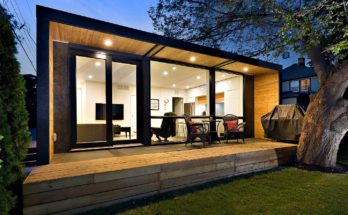A prefab house already being sold for little more than $1000? Yes, it’s possible, as Swedish ready-to-assemble company IKEA has now proven, after years of research and design, as well as extensive field testing, even if these prefabs aren’t ones you’ll find at your local IKEA store. There are already tens of thousands of people living in these $1100, 3-hour set-up, easily ship-able IKEA prefab homes around the world, but the first inhabitants are those most in need of affordable, secure housing of this type.
3.5 million refugees living in tents and temporary shelters around the world. 3.5 million. So far what the UN compounds and other temporary housing situations have to offer for these people are canvas tents — the regular tents you’re familiar with that use ropes and poles to stand up. And guess how long the average family spends in these tents? 12 years. However, is a tent a stable environment for a family? Is it a safe structure where men, women and children can be secure from crime? It turns out that there has been a lot of crime in these types of refugee compounds in all areas, and part of that has to do with the fact that tents are not safe from intruders. So IKEA Foundation partnered with the UN refugee agency and Swedish designers to come up with a new flatpack prefab which is very affordable, very transportable and re-useable, and sufficiently stable and safe.
The prototype IKEA prefab home shelters (click photo to make it bigger) were developed with the goal of revolutionizing or at least improving the camp living situation. Also, to increase usage life. The tents last around 6 months because of the harsh conditions of the areas where they are set up. So IKEA’s prefabs are intended to be stable relative to these. The panels of the prefab, perhaps the part quickest to wear, last up to 3 years by design.
The boxes the IKEA prefab house come in are “like the IKEA bookshelves,” according to Johan Karlsson, who works on the project. They’re designed to be easy to transport and set up in the field.
They want their prefab house to be easier to ship, assemble and live in.
It starts with a frame, which comes in a bag (like a regular tent pole bag but bigger) which is shipped in one of the flatpack boxes. It’s got pipes, connectors and wires in it, and these are assembled to compose the frame of the prefab house. Then there’s the panels, which are thin and very light, but are durable and have a thin layer of insulation. These panels fit right onto the frame of the prefab house and you have walls.
Keep reading on page 2: click here.











